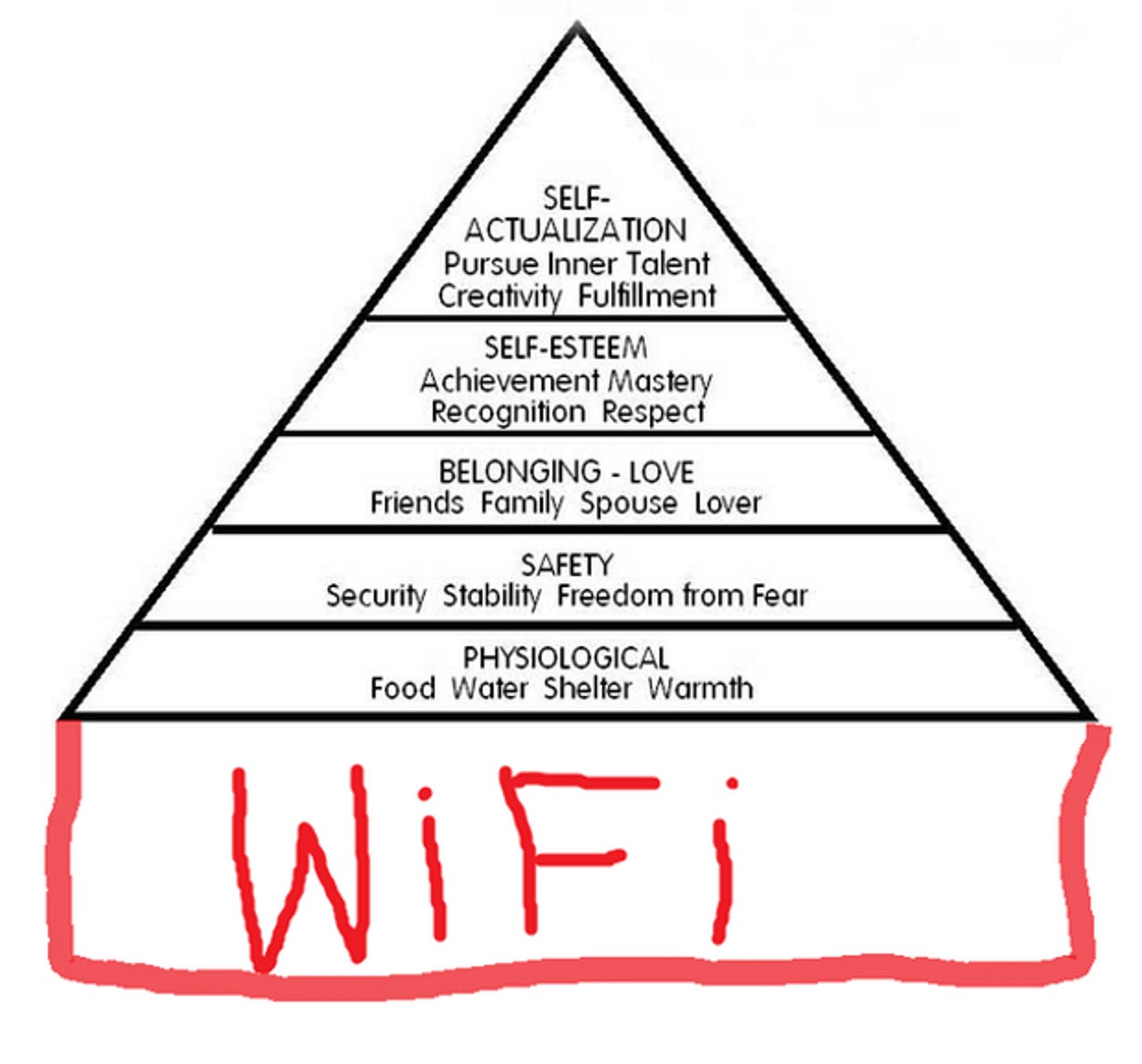How much do we love our Wi-Fi? Enough to abandon security and switch hotels and airlines

Xirrus, a high-performance wireless network provider, revealed in its Where the Wires End Survey that we really, really love our Wi-Fi.

That probably comes as no surprise. But Xirrus also discovered that while most respondents, 79 percent, do not feel that public Wi-Fi is secure, that won't stop them from using it. The majority of users, 62 percent, still connect to public Wi-Fi and hope for the best.
In addition, more than half, 66 percent, of travelers would change hotels for a better Wi-Fi experience. I not only know I would, I've actually done that. Moreover, 49 percent would change their preferred airline provider if they knew they'd get better Wi-Fi.
Featured
We hate it when we have bad Wi-Fi. 84 percent of respondents reported bad Wi-Fi has kept them from doing their job. As someone who does a lot of work on the road I can only say "Amen!"
If there was one change I could make to most of the technology trade-shows I attend, it would be better Wi-Fi. Even today, with 802.11n everywhere and 802.11ac being deployed, Wi-Fi fails far too often at conferences.
That's because, today, 90 percent of consumers own at least one connected device, e.g., laptop, smartphone, or tablet. For business users on the road, it's 100 percent or near enough not to matter. By my count, I carry at least three Wi-Fi connected devices when I'm working remotely: A laptop, a tablet, and a smartphone.
Curiously, Xirrus also found that a surprising number of Wi-Fi users, one in three, also own a wearable device of some kind such as smartwatch or fitness band. Slice Intelligence's claims that Apple Watch sales may have fallen by 90 percent since launch may be premature.
Put a few thousand users with all of their devices in one place, and it's no wonder that Wi-Fi so often fails to live up to our demands. It will only get worse. ABI Research estimates that more than 2.3 billion Wi-Fi devices were sold in 2014 alone. Throw in all the Internet of Things devices, a market IDC expects to hit $7.1 trillion by 2020, and there's simply not enough wireless bandwidth to go around.
802.11ac Wave 2, which enables three Wi-Fi clients to be served at the same time from a single access point can't come soon enough. Of course, to support 802.11ac Wave 2, not only will we need to get new Wi-Fi gear, we'll also need to build out our wired infrastructure to support our endless wireless data hunger.
Xirrus, which of course has a vested interest in selling your company new Wi-Fi equipment, states "The traditional approach of upgrading every 5 years to the next Wi-Fi standard [802.11ac Wave2] is no longer good enough." They're not wrong.
As Shane Buckley, Xirrus's CEO, said in a statement, "We are now more than ever a mobile, wireless-reliant society. The proliferation of Wi-Fi connected devices combined with the expectation of steadfast connectivity has put increased demand on Wi-Fi networks everywhere. Nowhere is this more apparent than in the enterprise."
So, whether you're a CEO or just a humble network technician, get ready to upgrade your network. Your users not only love their Wi-Fi, they need it, and their data demands are only going to grow ever higher.
Related Stories: